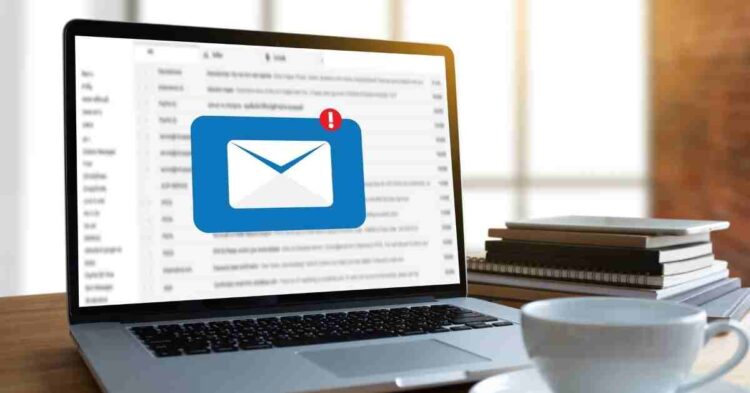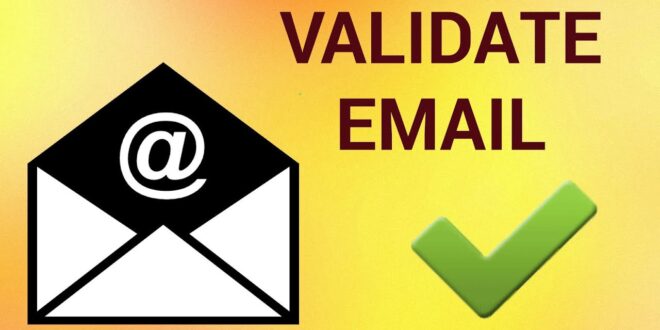What is email validation?
Email validation is a digital marketing term that refers to the process of verifying that an email address is active without actually sending an email.
In addition to lowering your hard and soft bounce rates on email campaigns, this technique helps to maintain the reputation of your outgoing mail server by reducing the number of spam complaints that are received.
There are three steps to the email validation, each of which takes a fraction of a second: syntax and formatting check, server confirmation, and mailbox validation, respectively.
1st Step: Check for Email Syntax and Formatting

Cheap email validation services, such as emailoversight.com that work well immediately verify that your list of emails adheres to conventional email formatting criteria, in addition to provider-specific formatting restrictions for certain major email providers (Did you know that a legitimate Yahoo email address can’t begin with a number?) You are right; it’s real.
To manually examine a big mailing list would be difficult due to the complexity of email formatting standards. Would you be able to tell by looking at the samples in the picture below whether emails are structured correctly?
As opposed to the latter, a verification engine quickly detects problems in both the local and domain parts of an email address, such as missing @ symbols and many other errors.
2nd Step: Confirmation of the domain
As soon as it has validated each address’s format, it checks to see whether the domain’s DNS records have been set up correctly and then tests the mail exchanger (MX) to see if it is capable of receiving mail.
Assuming that everything checks up in terms of syntax and formatting as well as domain and server, the service next goes on to verifying each individual mailbox’s integrity.
3rd step: Verification of the Mailbox

Checking to see whether the particular mailbox exists is the last and most important step in the process.
When the service contacts the mail server, it uses SMTP protocol to make sure that the mailbox can receive messages.
All of this may be done by a reputable validation service without sending a single email.
The whole verification procedure usually takes less than a second. Depending on the response time of the mail server under test, it may take a little longer in certain instances than in others. Even the simplest anti-spam system may slow down response times.
Tools for assessing risk
In order to remove incorrect data or detect potentially problematic emails, several verification services provide extra capabilities.
- Email addresses with the same name
- Servers for all email roles
- These are just short-lived email accounts.
- Ignore Spam Traps
But not all suppliers provide all of these services, and some do not. The businesses you are considering should be carefully vetted to ensure that you get all of the services that are essential to you.
Assimilation of the Data

You may obtain a complete report and/or see your findings via a secure client area on the provider’s website, regardless of how each email verification service displays the results of their validation tasks.
With API integration, the results are immediately sent back to your system, which may then approve or reject the email under test based on the findings.
Services that check email validity only provide limited information in their findings. If the findings are incorrect or dangerous, some providers provide more comprehensive information about the problem.
Only a few email verifiers provide the option of defining whether a result is deemed successful or not. As a matter of fact, not all outcomes can be categorized as legitimate or invalid. Having a better understanding of the particular problem impacting your data allows you to assess the risk associated with each answer type and decide if those findings should be discarded, retained, or potentially retested.
Verification in Real-Time
As email addresses are input into your systems, they are validated in real-time.
Any system you use to gather client data—a form on your website, your customer relationship management (CRM), or any other point of digital data collection—can be integrated with an email verification API to do real-time verification. This ensures that the data entering your system is pure. Your mailing lists will no longer be clogged with bogus email addresses!
Software development kits (SDKs) are available for major development platforms and languages, allowing your software developer to connect Verifalia’s email verification service with your CRM or app in only a few lines of code.
It’s easier and less expensive than you think to implement a verification API, and it’ll save you time and money in the long term.
Cleanup of your Email List

It is also known as bulk verification, which is the process of sending a mailing list or database contents in bulk for verification, enabling you to remove inactive or bogus email addresses from your lists. You may manually submit lists for cleaning or use an API connection to send them automatically, either as required or on a regular basis. Most of the time, you may download the findings in popular file formats, such as.xlsx or CSV, after the validation procedure is complete.
As a result, verification services can handle lists from a few hundred to tens of millions of addresses with ease.
This is excellent if you’re able to verify email addresses in real-time as they come through API. As a result of list degradation, we still suggest cleansing your whole mailing list at least twice a year to prevent delivery statistics from plummeting to unsafe levels. As a result, many businesses choose to do this more often, particularly before sending any critical messages.
Conclusion
A genuine validation service will never, ever send an email to the contacts you supply them with. This is important to understand. This is of utmost critical significance. Don’t put your faith in any service provider that sends you an email as part of their verification procedure.
Maintaining clean and correct data is critical to the success of any effective digital marketing campaign.
With this foundational information, you can begin developing a strategy for your business that will enhance your deliverability, reach a greater number of potential consumers, and increase the number of sales. So go ahead and double-check that email list!
 Hi Boox Popular Magazine 2024
Hi Boox Popular Magazine 2024



